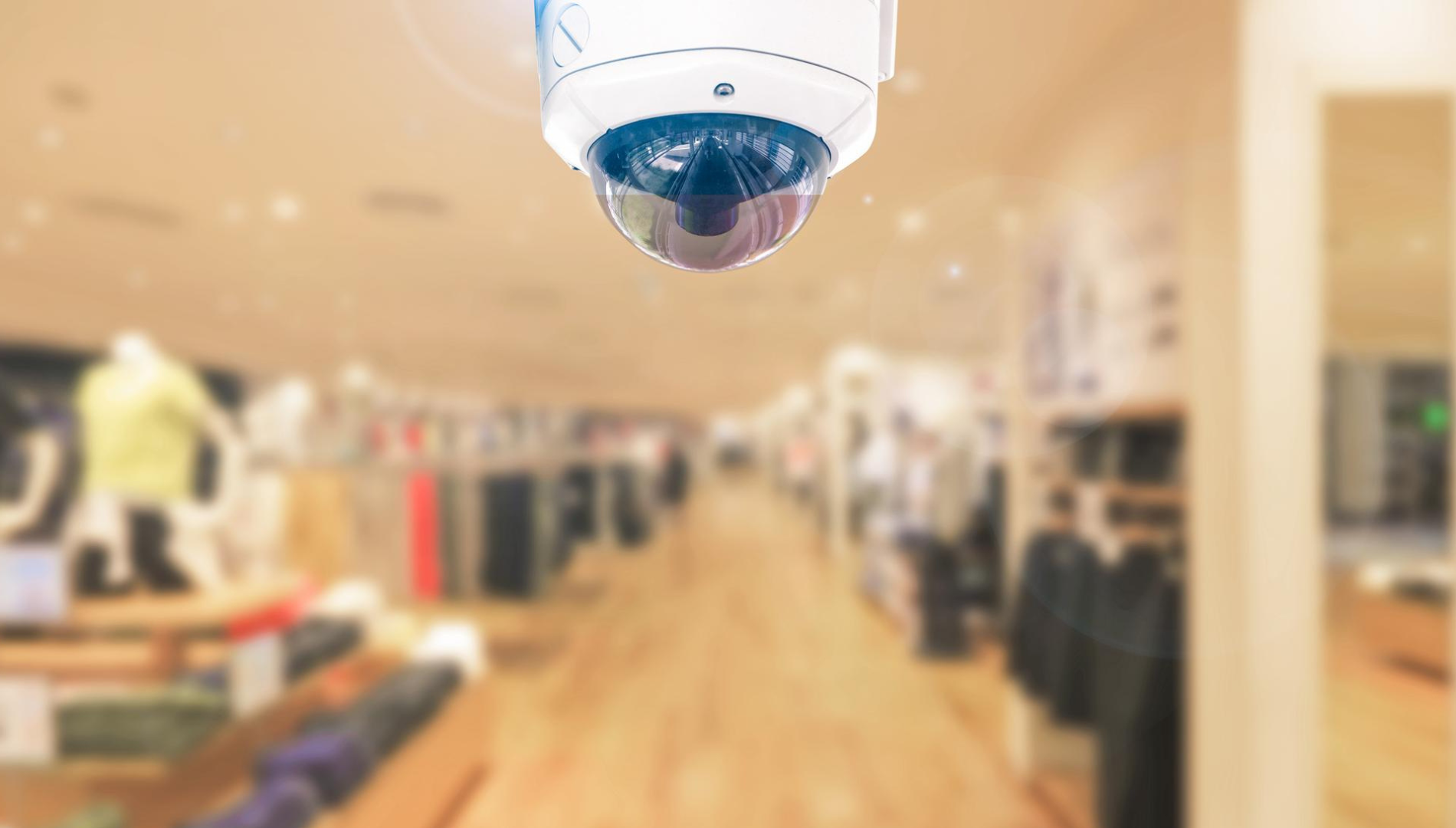Operational inefficiencies, fraud, and theft can have long-lasting negative impacts, which makes loss prevention vital for businesses.
The National Retail Federation’s 2024 report reveals a 93% rise in shoplifting incidents and a 90% increase in related financial losses since 2019, highlighting escalating retail theft and violence across major U.S. retailers.
Discover the top loss prevention strategies and best practices you can implement to protect your assets, enhance your reputation, and ensure sustainable growth for your business.
Why Is Loss Prevention Important?
Effective loss prevention strategies and practices can positively impact a business’s operations, reputation, customer satisfaction, and employee retention. Businesses may choose to focus on loss prevention to:
Protect finances. The primary reason businesses should focus on loss prevention is to minimize financial losses and ensure profitability, growth, and sustainability.
Preserve brand reputation. Loss prevention efforts can demonstrate a business’s commitment to safety and security measures, which can attract new customers and reduce employee turnover rates.
Build customer trust. Businesses with high levels of internal and external theft, among other causes of loss, may suffer from diminished credibility and trustworthiness in the perceptions of customers, partners, and stakeholders.
Ensure uninterrupted operations. By implementing effective loss prevention measures, businesses minimize the risk of disruptions, prevent delays, and reduce employee distractions to maintain smooth operations.
What Is a Loss Prevention Strategy?
A loss prevention strategy is a structured process created to minimize and prevent financial losses within a business. Various loss prevention strategies can be combined to create a comprehensive approach addressing different risks. Common risks that can cause business losses include internal theft, external theft, operational errors, cybersecurity breaches, and third-party fraud.
Retail Loss Prevention Strategies
Retail establishments face a significant risk of losses due to the rise of organized retail crime, a serious form of external theft. Criminals are developing new strategies to steal cash and merchandise from stores, such as altering gift cards, launching phishing attacks, and engaging in return fraud. Other examples of external theft that retail businesses face include shoplifting, burglary, and armed robbery.
Although these businesses are susceptible to other causes of loss, external theft is a particularly prominent issue, so loss prevention strategies in retail primarily focus on implementing security measures and technology to deter and prevent external theft incidents.
Data Loss Prevention Strategies
Data loss can impact all businesses and may occur due to accidental deletion, hardware failure, cyberattacks, and insider threats. This form of loss can lead to severe consequences for businesses, including financial losses from fines and reputational damage from negative media coverage.
By engaging in data loss prevention strategies, businesses can identify weaknesses in their cybersecurity infrastructure and detect potential data breaches before they have detrimental impacts. Data loss prevention strategies and best practices can be integrated with standard loss prevention strategies to ensure a business’s exhaustive defense against a range of physical and digital security threats.
What Are the 6 Principles of Loss Prevention?
A well-constructed loss prevention strategy can be designed around the six key principles of loss prevention:
Prevention – Focusing on how to design initiatives and allocate resources to prevent losses.
Awareness – Educating workforces, from part-time employees to associates, to help them understand loss prevention concepts.
Compliance – Considering best practices to establish compliance policies and protocols to hold necessary parties accountable.
Detection – Ensuring any losses that cannot be prevented are promptly identified to reduce their impact.
Investigation – Using investigative techniques to collect evidence and identify those involved in incidents.
Resolution – Taking action to prevent future losses by assessing root causes and establishing new protocols or strategy adjustments.
These principles, arranged in a clockwise circular pattern, are interwoven, allowing businesses to take a holistic approach to loss prevention. To successfully prevent, identify, and resolve issues, businesses should aim to incorporate all six principles into their strategy.
Top Loss Prevention Strategies and Best Practices for Businesses
Strengthen your business’s protection with these loss prevention strategies and best practices.
1. Employing Physical Security
A physical security presence can deter external theft, such as shoplifting and organized retail crime, while also reducing the occurrence of internal theft.
Security guards can patrol a predetermined route in a business’s premises to detect and address security incidents. They are powerful deterrents and can prevent criminals from stealing machinery, equipment, or other items from the property. Similarly, employees will be less likely to steal during their shifts, as security personnel can be assigned to monitor working areas.
Guards can also identify operational inefficiencies, and businesses can be immediately notified to make necessary adjustments. Other duties security guards can perform to aid businesses in loss prevention include identifying thieves, liaising with law enforcement, promoting a sense of safety among customers, and operating security technology, such as security cameras.
2. Installing Surveillance Systems
Security cameras and other forms of surveillance, such as mobile security trailers, are designed to deter and detect crimes and help businesses protect their assets against losses from external and internal theft. Sentinel systems are a more cost-effective solution that serves the same purposes. Both criminals and employees will be aware that their actions are being recorded, preventing them from theft and malicious activities.

Sentinel Surveillance System
Surveillance systems can also document incidents and aid in investigations to hold perpetrators accountable and ensure they are appropriately prosecuted, subsequently preventing them from returning to the business’s premises. These cameras can be equipped with various features to further support businesses in their loss prevention approach, including motion detection, license plate recognition, night vision, 360-degree view, and cloud storage.
3. Screening Candidates
A thorough candidate screening process is the top loss prevention measure that reduces internal theft. Through this process, businesses can minimize the risk of hiring individuals with a history of crimes such as theft or dishonest behavior. The first stage often involves conducting a standard background check to verify each candidate’s employment history and a criminal background check to identify any past convictions.
Asking candidates specific questions related to loss prevention can also provide insight into their capabilities at handling and responding to theft and other threats. Similarly, incorporating character assessments can help businesses evaluate each candidate’s traits, including their honesty, accountability, impulse control, and decision-making.
By conducting these assessments and screening processes, businesses can make informed hiring decisions and select candidates who are less likely to engage in theft and more likely to respond appropriately to other causes of business losses.
4. Providing Loss Prevention Training
While implemented security measures can defend against losses within a business, increased employee awareness plays a similarly vital role in loss prevention. When employees learn to recognize, respond to, and report suspicious behavior, they become an integral part of the business’s security system.
Employee training can include other key components, including:
- Inventory management – Ensuring correct handling and tracking of inventory to prevent internal theft and losses due to irresponsibility or negligence.
- Theft action plan – Enabling the appropriate action to be taken when theft occurs, such as noting the time of the incident or finding a safe location if threatened.
- Emergency procedures – Preparing for various emergency scenarios, such as natural disasters and security breaches.
- Use of security technology – Training on how to operate surveillance cameras, alarm systems, and other security equipment.
These training programs should be facilitated by law enforcement officers, security personnel, or other professionals with proven experience in security and theft prevention. Training can be conducted in person, but it’s advised to provide easily accessible resources for employees to refer to when needed.
It’s important to note that all individuals have different learning styles, so for valuable information to be retained, the training should incorporate various methods, such as visual aids, interactive simulations, hands-on practice, and written materials, to accommodate every employee. Regular refresher courses and updates on new security protocols can further enhance the effectiveness of the training programs.
5. Displaying Anti-Theft Signs
Studies have revealed that visible security signs are among the top deterrents burglars consider when selecting a target, making them an effective and low-cost solution for loss prevention. For maximum impact, signs should be concise, legible, and strategically positioned in areas where they are easily visible.
Anti-theft signs can communicate different messages, including notifying individuals that violators will be prosecuted or drawing attention to the presence of other security measures, such as surveillance cameras. Common text on anti-theft signs include:
- All Thieves Will Be Prosecuted
- 24/7 Video Surveillance
- CCTV in Operation on These Premises.
- You Are Being Recorded
- Smile, You’re On Camera
- This Store Is Protected By:
- Monitoring in Progress
While anti-theft signs can deter external theft, they should be implemented alongside other security measures, and businesses should refrain from using fake signs. Criminals may spot illegitimate signs and assume that the business premises are unprotected, while only implementing these signs with untrue claims of other security measures can lead to a false sense of security for business owners, employees, and customers.
Instead, using legitimate signage that accurately reflects implemented security systems can reduce the risk of theft and enhance the impact of other loss prevention strategies.
6. Integrating Access Control
Electronic access control systems enable businesses to restrict access to sensitive locations and prevent unauthorized individuals from areas where they could steal valuable inventory.
Security personnel can manage the system’s controls, which are customized to grant or deny entry based on employee roles, responsibilities, and clearance levels. Individuals’ identities can be authorized through biometrics, mobile credentials, pin codes, key fobs, temporary access cards, or similar technologies.
Through access control, businesses will have a clear overview of who enters and exits different areas and when they do so. Therefore, if inventory is reported missing, businesses can quickly identify who accessed the area where the inventory is stored during the relevant time frame. This can deter employees from committing theft, as they will be aware that their actions are being tracked and recorded.
Electronic access control also aids investigations, as businesses can review access logs and temporarily restrict areas on their premises until they have identified the cause of loss and the individuals who are to be held accountable.
7. Using Electronic Article Surveillance (EAS)
Electronic article surveillance (EAS) prevents shoplifting by detecting unpaid items and activating the business’s alarm system when a thief attempts to leave the premises.
These systems are most commonly used in retail stores, where EAS tags and labels are attached to valuable merchandise. Antennas are installed at the exit to create a ‘zone,’ and when a tagged item enters the zone, the antenna detects a disturbance in frequency, which automatically triggers an alarm. This allows security personnel to respond quickly and address the attempted theft.
EAS allows businesses to increase their security and protect against losses without impacting the customer’s shopping experience. Implementing these systems is also highly flexible, as businesses can decide exactly how items require a tag.
EAS technology has improved in previous years, and tamper-proof designs prevent tags from being forcibly removed. For retail stores, in particular, EAS is an essential addition to their loss prevention strategies.
Loss Prevention Tips
Explore other loss prevention tips to further protect your business.
Consider Premise Layout
A well-designed premise layout can significantly reduce the occurrence of external and internal theft. Inventory, equipment, furniture, and employees should be strategically positioned to maximize visibility and minimize blind spots for potential thieves to hide. Businesses may also need to add additional lighting fixtures to ensure all areas are well-lit.
For retail stores, using aisles, display fixtures, and signs can help control traffic flow and minimize congestion, giving thieves fewer opportunities to shoplift undetected.
Conduct Risk Assessments
Risk assessments allow businesses to identify weaknesses in their deference strategy and take the appropriate action. All businesses have varying risk levels and priorities, which are uncovered during this assessment. Otherwise, resources can be misallocated, incurring unnecessary costs for business while failing to reduce losses.
Businesses can either conduct a risk assessment themselves or employ a security service to complete one on their behalf.
Monitor Loss Trends
Keeping a close eye on loss trends allows businesses to evaluate how well their strategies are working. While some methods may effectively reduce losses, others could be inefficient and wasteful.
By monitoring these trends, businesses can pinpoint areas for improvement and adjust their strategies accordingly to optimize their loss prevention efforts.
Navigate Effective Loss Prevention Strategies With American Security Force
American Security Force’s robust retail security services will support your business and help to protect against losses caused by theft and other crimes.
We’ll thoroughly analyze your risks to create a tailored strategy incorporating advanced technology, such as surveillance cameras, access control systems, and other security solutions. Our highly trained security guards can also be deployed on your premises to conduct patrols, deter crime, and address any incidents.
Speak to our experts today to learn more about how our loss prevention expertise and comprehensive security services can minimize your business’s financial losses.




